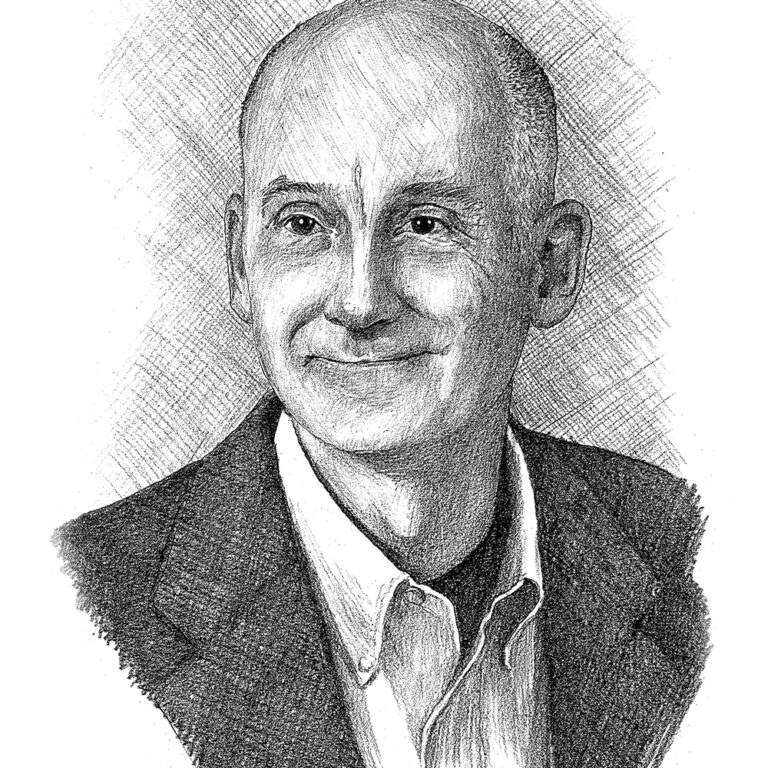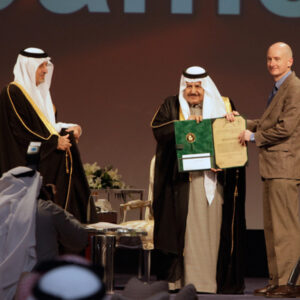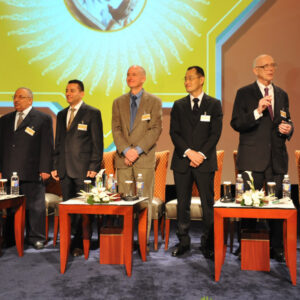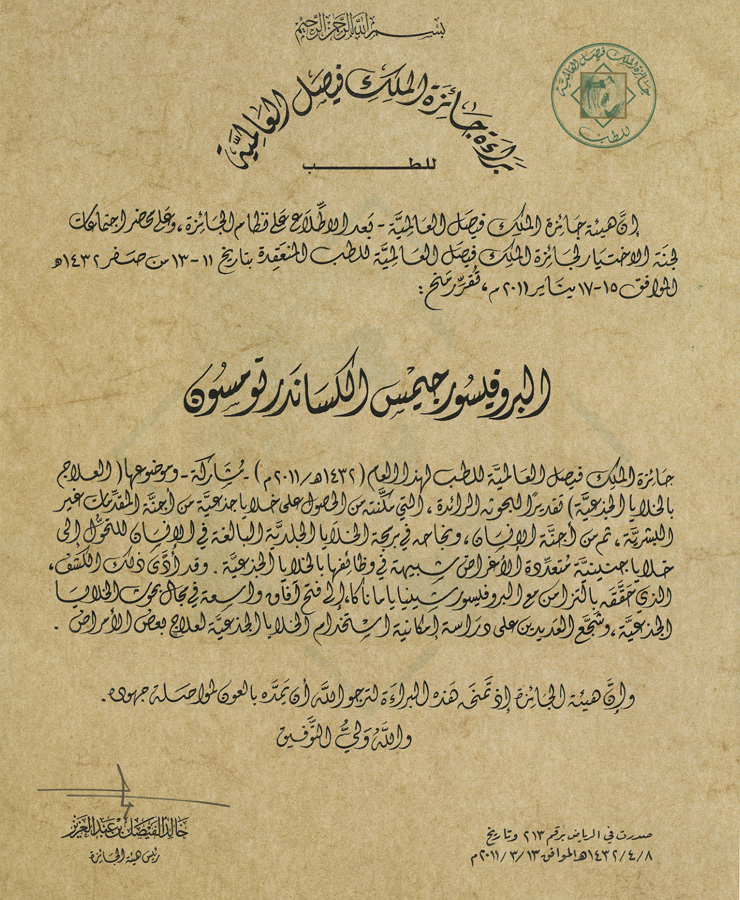

Professor James A. Thomson
King Faisal Prize in Medicine 2011 Laureate
Topic: "Stem Cell Therapy "
It is my hope that our efforts to understand pluripotent stem cells will one day give way to clinical applications capable of improving people's quality of lives

James Thomson received his B.A. in biophysics from the University of Illinois in 1981, and earned two doctorate degrees, one in veterinary medicine and one in molecular biology, from the University of Pennsylvania and the Wistar Institute in 1985 and 1988, respectively. He spent the following two years as a postdoctoral research fellow in the Primate In Vitro Fertilization and Experimental Embryology Laboratory at the Oregon National Primate Research Center. From 1991-1994, he completed a residency in veterinary pathology at the Wisconsin Regional Primate Center at the University of Wisconsin-Madison. Professor Thomson is currently the Director of Regenerative Biology at the Morgridge Institute for Research in Madison, Wisconsin, a Professor of Anatomy, a John D. MacArthur Professor at the University of Wisconsin, and a professor in the Department of Molecular, Cellular, and Developmental Biology at the University of California, Santa Barbara.
Thomson began his pioneering stem cell research as a graduate student, then continued his research at his own laboratory at the University of Wisconsin, working initially with mouse and monkey embryos. In 1998, he harvested stem cells for the first time from human embryos. Stem cells are “all-purpose” cells that arise within a few days of embryonic life, can divide without limit and are capable of turning into any of the body’s 220 cell types. Hence, they offer a huge potential for further understanding human development and the treatment of complex diseases such as diabetes, Alzheimer’s disease, Parkinson’s disease, and cancer. However, since embryos were inevitably destroyed during the process of harvesting embryonic stem cells, Thomson’s discovery triggered a long and bitter controversy among scientists, politicians, and religious groups, among others. The turning point in the debate came at the hands of both Thomson and Yamanaka. In November 2007, both Thomson and Shinya Yamanaka, independently, made the astounding discovery of a new technique whereby adult human skin cells can be coaxed to revert into cells that looked and acted very much like embryonic stem cells but without ever using a human embryo. The technique, which involved adding just four genes to adult skin cells, not only calmed the furor regarding the bioethics of stem cell research but also paved the way for a surge of new stem cell research worldwide.
Professor Thomson’s achievements have been recognized by several awards and honors including membership of the National Academy of Science, American Academy of Achievements Golden Plate Award, Hall of Fame Award for Scientific Achievements, Wilson S. Stone Memorial Award for Biomedical Research and Lois Pope Award Annual LIFE International Research Award 2002. In 2001, he was featured on the cover of Time Magazine as one of 18 of “America’s Best in Science and Medicine.” He was also featured in Madison Magazine as “Man of the Year” and in People Magazine as “One of the most intriguing people of 2001.” In 2007, many magazines, including: “Science,” “Nature”, “Time”, “USA Today”, and the “Independent” also listed his work as one of the most significant scientific advances of the year. In 2008, Times Magazine named him one of the “100 Most Influential People in the World”, while his derivation of human induced pluripotent stem cells was highlighted in “Science” magazine’s scientific breakthrough of the year. Professor Thomson has published more than 120 papers and holds 14 patents. He is also a founder and the Chief Scientific Officer of Cellular Dynamics International Company, which produces derivatives of human induced pluripotent stem cells for drug discovery and toxicity testing.
This biography was written in the year the prize was awarded.
- He received many awards including:
- Albany Medical Prize in 2011.
- McEwen Award for Innovation from the International Society of Stem Cell Research (ISSCR) in 2013.




